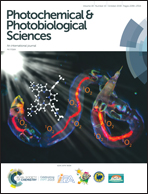The inhibitory effect of silk sericin against ultraviolet-induced melanogenesis and its potential use in cosmeceutics as an anti-hyperpigmentation compound
Abstract
Ultraviolet radiation (UVR)-induced redox imbalance in melanocytes triggers the activation of tyrosinase that results in melanogenesis and its related skin disorders. Supplementation of biological reductants or anti-tyrosinase compounds inhibits such melanogenesis. Silk sericin (SS), a globular protein, is known to possess antioxidant and anti-tyrosinase activities along with other biological attributes. However, its inhibitory activity against UVR-induced melanogenesis has yet to be explored. In the current study, we have scientifically explored the inhibitory activity of SS against UVR-induced melanogenesis. Anti-tyrosinase activity of SS was assessed using mushroom tyrosinase, showing that Antheraea assamensis sericin (AAS) and Philosamia ricini sericin (PRS) inhibited 50% of its activity. Inhibitory activity of SS against UVR-induced melanogenesis was assessed by measuring the cellular melanin content, intracellular tyrosinase activity, and reactive oxygen species (ROS) levels in mouse melanoma. SS pretreatment significantly reduced cellular melanin and ROS production in UV irradiated melanocytes compared with SS untreated cells. AAS treatment before UVA or UVB irradiation significantly inhibited tyrosinase activity. Rheological studies showed that the skin care formulation prepared by the addition of AAS to the basic formulation minimally affected its flow properties. Altogether, our results validate that AAS efficiently inhibited UVR-induced melanogenesis and it could be used as a potential antioxidant molecule in skin care cosmeceutics.



 Please wait while we load your content...
Please wait while we load your content...